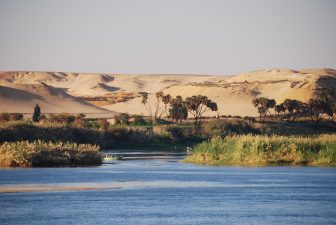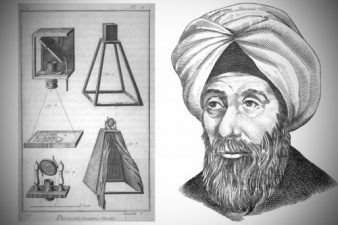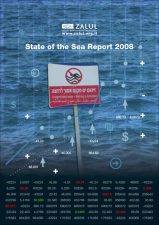[youtube]http://www.youtube.com/watch?v=jol83uScgOU[/youtube]
More than 5000 residents in the Um Al-Nasser village in the Gaza Strip have been suffering for decades from the spread of diseases due to the existence of a number of sewage lagoons.
“My children have been suffering from intestinal worms, every time we take them for a medical check-up we find out that they are infected,” said Rafiq Abu Hashish, a father of 11 in the Um Al-Nasser village in the northern Gaza Strip.
“This will be an unending situation, unless the problem of these sewage lagoons is totally solved,” he continued.
A Village Fed Up
More than 5000 residents in the Um Al-Nasser village have been suffering for decades from the spread of diseases and environmental problems due to the existence of a number of sewage lagoons. Some of the health problems the residents have been suffering from include skin allergies and respiratory problems.
Um Abdul Rahman, an elderly woman, complained of the spread of diseases among little children, saying that they are no longer able to tolerate such complications, especially since her village is located very near to the border lines with Israel.
“Last night, we took a 3-month-old baby to the clinic, as he had continuous vomiting and diarrhea. We are also suffering from the spread of insects and mosquitoes,” she complained.
Hassan Abu Rashed, another village resident, talked about a number of problems he and his family have been facing.
“The water here is polluted; we are forced to buy water from outside the village. We can not dig wells here because of the spread of these lagoons,” he explained.
“With the installation of the water treatment plant, we hope our situation changes. Therefore, we call upon all concerned bodies to take care of us. Life here is becoming increasingly unbearable.”
Describing the many health complications that the villagers of Um Al-Nasser suffer from, local clinic physician, Dr. Mohammad Yaghi revealed that 80 to 90 percent of these villagers suffer from various health problems and infections caused by the foul smelling sewage lagoons.
“In addition to these diseases, we face some other problems, particularly in winter, such as upper-respiratory tract infections among children, which are sometimes viral or bacterial. There are also cases of Asthma as a result of the foul emissions from the sewage lagoons around us,” explained Yaghi.
According to the Coastal Municipalities Water Utility in Gaza, the problem of these sewage lagoons has existed since a few decades ago. Sewage of the northern Gaza towns of Beit Lahiya, Beit Hanoun and Jabalya, is being pumped into the lagoons of the Um Al-Nasser village.
“We have recently been hearing that concerned municipal bodies intend to transfer these lagoons to another area, but this is not the solution, as all of these health problems will then be transferred to the new location,” he continued.
Incomplete Project
The thousands of cubic meters of sewage currently accumulating in the lagoons could potentially be treated to be used for agricultural purposes.
In 2007, following the collapse of a large filtration basin in the area, the Coastal Municipalities Water Utility created and upgraded some of the sewage lagoons. Yet the problem needs to be resolved completely, due to the increasing environmental threats endangering the lives of the residents.
To resolve the problem, local officials started work on a $75-million dollar water treatment plant. The project is part of the Quartet Committee’s developmental plans for Gaza. The Quartet committee consists of the U.S, the United Nations, the European Union and Russia.
“We could achieve the first phase of the sewage water treatment project, by pumping thousands of cubic meters of sewage into the north-eastern parts of Gaza, where we created some filtration basins,” said Farid Shobair, the engineer in charge of the project.
“Before the creation of such basins, the Um Al-Nasser village used to receive about 17,000 to 20,000 cubic meters of sewage on a daily basis,” he explained.
Shobair added that the first phase of the treatment plant project was installed on the northeastern parts of Jabalya, near the eastern cemetery, and that they need to complete the second phase soon as the situation has become unbearable for the area.
He also said that the thousands of cubic meters of sewage currently accumulating in the lagoons could potentially be treated to be used for agricultural purposes, instead of being concentrated in these lagoons.
But so far, the project remains incomplete. Work has been held up due to the Israeli closure of the borders and the many Israeli restrictions on the entry of raw materials into Gaza.
Monther Shoblaq, the Director General of the Coastal Municipalities Water Utility in Gaza explained that it is clear that the types of equipment needed for this project are municipal in nature.
“I am talking about thousands of tons of cement, special kinds of pipes, and electro-mechanical equipment such as huge pumps and treatment facilities,” he said.
Shoblaq says that in order for companies to implement the second phase, they need to be assured that when they start the project, they will be able to finish it. They should be guaranteed that they will be receiving all necessary materials. Therefore, he hopes that the Quartet Committee will ensure that a signed letter guaranteeing this from the Israeli side will be handed over to such companies.
“Currently, our teams need an up-to-date coordination with the Israeli side, whenever they have some activity in the area. So, if we want to erect the water treatment plant smoothly, such Israeli guarantees are more than necessary,” said Shoblaq.
“Without commitment from the Israeli side to allow entry of the materials needed for this construction, the project will never see the day of light.”
For more than two years now, Israel has been blocking entry of a long list of essential items into Gaza including cement and pipelines, for what Israel argues, are security considerations.
Rami Munir Almeghari is an Independent journalist and part-time university lecturer, based in the Gaza Strip.




4 thoughts on “A REPORT FROM THE STRIP: Gazans Plead for the Sewage Lagoons to Be Gone Soon”
Comments are closed.